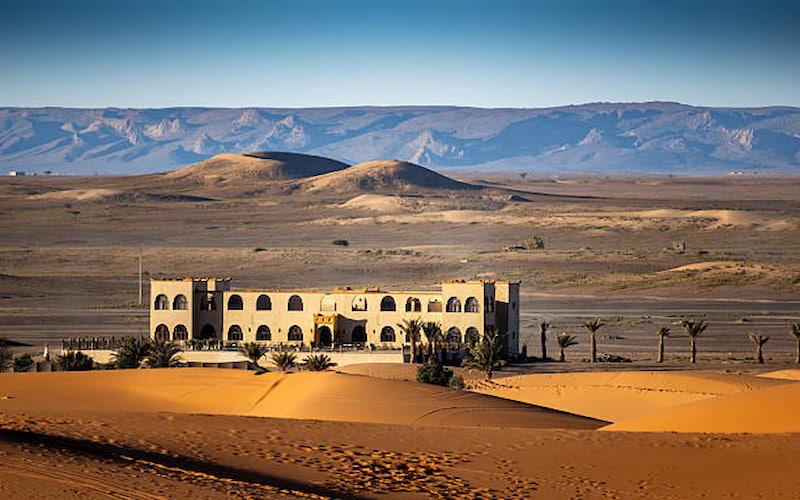Best Time to Visit Morocco for an Unforgettable Holiday

Morocco is a land of contrasts – from the bustling souks of Marrakech to the vast Sahara Desert, from snow-capped Atlas Mountains to serene coastal towns. Every season in Morocco brings a unique experience, making it a year-round destination. However, if you want to make the most of your journey, knowing the best time to visit Morocco is essential. The country’s climate, cultural events, and travel activities vary widely across the year. Before planning your trip, make sure you have your Morocco Visa ready so you can fully enjoy the magic this North African gem has to offer.
Morocco’s Climate Overview
Morocco’s geography gives it a diverse climate – Mediterranean along the coasts, desert-like in the south, and alpine in the Atlas Mountains. This variety allows travelers to choose experiences based on the time of year. Generally, Morocco experiences four distinct seasons:
-
Spring (March – May) – Pleasant temperatures, blooming landscapes, and perfect for sightseeing.
-
Summer (June – August) – Hot, especially in desert regions, but cooler along the Atlantic coast.
-
Autumn (September – November) – Comfortable weather, cultural festivals, and fewer crowds.
-
Winter (December – February) – Snow in the mountains, mild coastal climate, and desert nights.
Visiting Morocco in Spring (March – May)
Spring is often considered the best time to visit Morocco. During these months, temperatures are moderate (15°C to 25°C), making it ideal for exploring cities like Marrakech, Fes, and Chefchaouen. The Atlas Mountains are at their greenest, and the valleys are filled with wildflowers.
Highlights of visiting in spring:
-
Festivals – The Rose Festival in Kalaat M’Gouna is a must-see.
-
Outdoor Adventures – Perfect weather for hiking, camel treks, and desert tours.
-
City Exploration – Explore medinas without extreme heat.
If you’re looking for a balanced mix of culture, adventure, and comfort, spring is unbeatable.
Visiting Morocco in Summer (June – August)
Summer can be very hot in Morocco, with temperatures exceeding 40°C in desert regions. However, this doesn’t mean you should avoid Morocco in summer – it depends on where you plan to go.
-
Best for Coastal Escapes – Cities like Essaouira, Agadir, and Casablanca enjoy refreshing sea breezes.
-
Atlas Mountains – Cooler weather makes it perfect for trekking.
-
Desert Adventures – Though hot during the day, evenings in the Sahara are magical.
Pro tip: Avoid the midday heat in desert areas; plan early morning or evening activities.
Visiting Morocco in Autumn (September – November)
Autumn is one of the best seasons to visit Morocco, it competes with spring. It is not too hot and it averages between 20 and 30 C. Landscapes are green even after summer, and culture is also flourishing.
-
Cultural Events – Marrakech International Film Festival in November.
-
Fewer Crowds – Compared to spring, autumn sees fewer tourists.
-
Adventure Ready – Ideal for desert camping and hiking.
Autumn is perfect for travelers who want good weather but wish to avoid the spring rush.
Visiting Morocco in Winter (December – February)
Winter in Morocco is unique because you can enjoy both snow and sun.
-
Atlas Mountains – Skiing opportunities in Oukaimeden near Marrakech.
-
Sahara Desert – Cold nights but pleasant days, perfect for camel trekking.
-
Coastal Cities – Mild climate in Agadir, Casablanca, and Essaouira.
Winter is also budget-friendly, as it is considered the low tourist season (except around Christmas and New Year).
Best Time for Specific Activities
1. Exploring Cities
-
Best months: March–May and September–November.
The medinas of Marrakech, Fes, and Chefchaouen are more enjoyable when the weather is moderate.
2. Sahara Desert Trips
-
Best months: April–May and September–October.
Avoid the extreme heat of summer and cold of mid-winter.
3. Trekking in the Atlas Mountains
-
Best months: May–June and September–October.
These seasons provide clear skies and comfortable hiking temperatures.
4. Coastal Relaxation
-
Best months: June–August.
Perfect for sun-seekers, surfing, and beach holidays in Essaouira or Agadir.
5. Festivals and Cultural Events
-
May – Rose Festival in Kalaat M’Gouna.
-
July – Gnaoua World Music Festival in Essaouira.
-
November – Marrakech International Film Festival.
These cultural highlights make certain months even more attractive.
Travel Tips for Choosing the Best Time to Visit Morocco
-
Plan Around Ramadan – Morocco is a Muslim-majority country. During Ramadan, restaurants may close during the day, but it’s a fascinating cultural experience.
-
Book Early in Spring and Autumn – These are peak seasons, so accommodations and tours fill quickly.
-
Pack Smart – Summers require light clothing, while winters (especially desert and mountain trips) need warm layers.
-
Consider Your Interests – Whether you prefer trekking, festivals, or a relaxed beach holiday, choose the season accordingly.
Conclusion
Morocco is a year round destination, however, the best time to visit Morocco depends on the type of experiences you want to have. Spring and autumn are the most comfortable seasons in terms of climate, because they are the most balanced and suitable to go sightseeing, experience adventures in the desert, and explore the culture. The summer is ideal to travel to the coast and the winter is a combination of skiing and desert tours. You can hike the Atlas Mountains, explore colorful souks, and camp under Saharan stars in Morocco, and it never fails to impress. And before you are off on your memorable trip, remember to apply your Morocco Visa in India so that you have an easy trip.
- Art
- Causes
- Crafts
- Dance
- Drinks
- Film
- Fitness
- Food
- Games
- Gardening
- Health
- Home
- Literature
- Music
- Networking
- Other
- Party
- Religion
- Shopping
- Sports
- Theater
- Wellness



